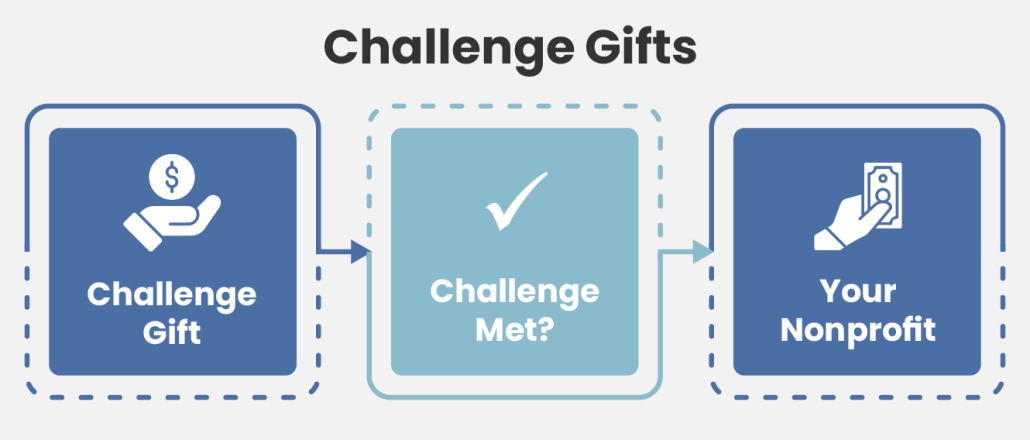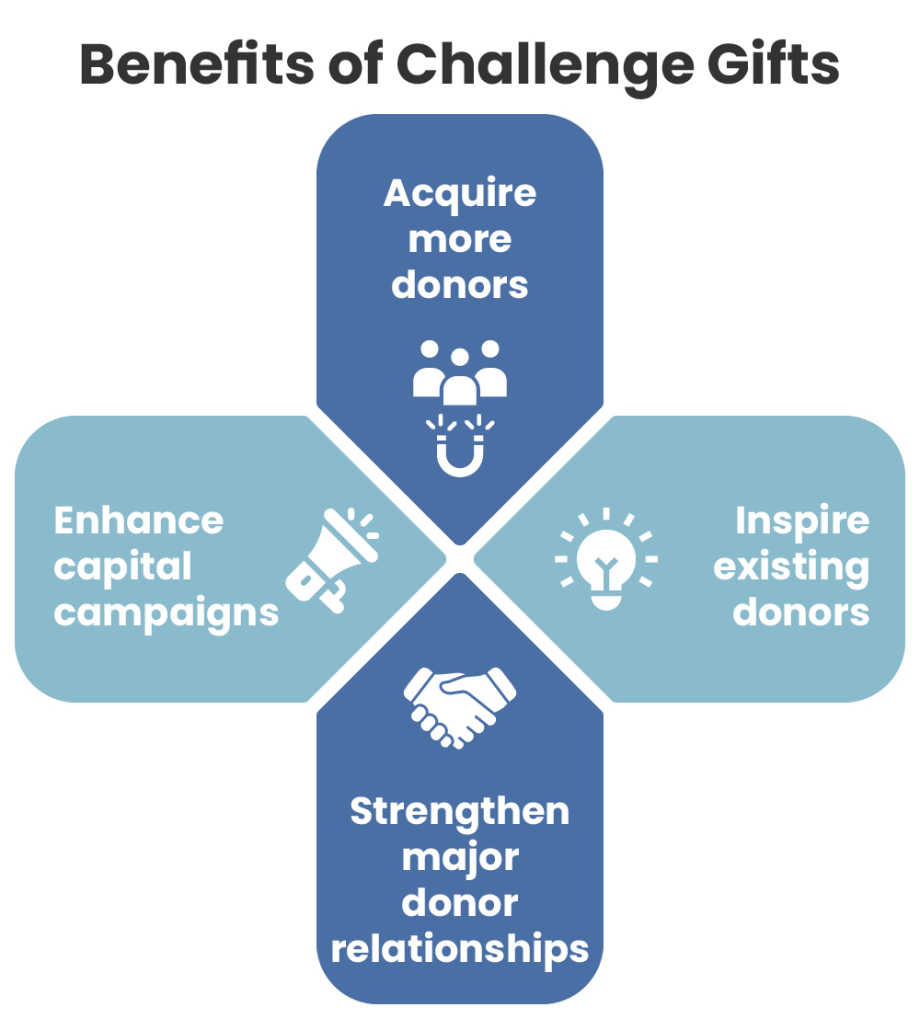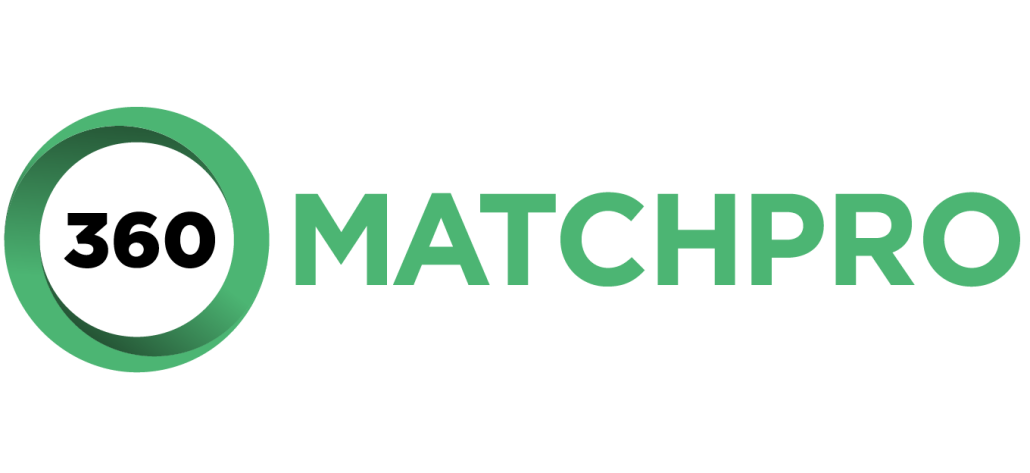Challenge Gifts: An Ultimate Guide to Winning More Donations
As a nonprofit fundraising professional, you work hard to secure every gift for your cause. Between coming up with innovative fundraising ideas and refining your existing strategies, there’s a lot that goes into cultivating a strong community of support for your nonprofit. How can you inspire more donors and amplify the impact of their generosity?
Challenge gifts are the perfect solution to this recurring question. By launching a challenge gift campaign, you can stir up renewed enthusiasm for your mission, raise substantial funds, and build long-lasting relationships with donors.
In this guide, we’ll walk through everything you need to know to get started with challenge gifts, including key steps and tips to maximize your results. Here’s what we’ll cover:
- Challenge Gifts: FAQs
- 4 Benefits of Donation Challenges
- How to Plan a Challenge Gift Campaign
- Tips for Promoting Your Challenge Gift Campaign
- Layering Challenge Gifts with Employee Matching
With thoughtful planning, you can craft a challenge gift strategy that unites donors and expands your nonprofit’s reach. After all, nothing brings people together like a good challenge.
Challenge Gifts: FAQs
Ready to tap into the full potential of challenge gifts? The first step is understanding how exactly they work. Let’s start with some frequently asked questions:
What are challenge gifts?
Challenge gifts, or challenge grants, are gifts that an individual or group of donors pledge to make if a nonprofit meets a predetermined fundraising challenge goal by a certain deadline. For example, a donor might agree to donate $15,000 if your organization manages to raise $15,000 within a given period of time.

Any type of donor can issue a challenge for a challenge grant, from major donors to corporations looking to advance their corporate philanthropy efforts. As a result, challenge gifts can come in various shapes and sizes.
What are some common guidelines for challenge gifts?
Typically, a challenge gift donor will specify the amount of their gift upfront, which they’ll award to your nonprofit as long as you raise the fundraising challenge amount before the deadline. Other challengers may opt to match however much you manage to raise within the time period, up to a certain amount.
However, the challenge goal may not always be financial. For instance, some challenge gifts may depend on the total number of donors who contribute during the challenge. Or, the challenge donor may give a certain amount for every bequest your nonprofit receives. When it comes to challenge grants, there are numerous options to suit different preferences and giving capacities.
How do challenge gifts differ from matching gifts?
While some of these donation challenges may involve matching a gift amount made to your nonprofit, challenge gifts are not the same as corporate matching gifts. Some of the key differences to note include:
- Funding Source. Companies usually create matching gift programs to engage employees in their corporate social responsibility (CSR) goals. After an employee makes an eligible contribution to a nonprofit, they’ll submit a request for the company to match that amount. Challenge gifts, on the other hand, can come from whoever has the willingness and capacity to offer one, including individuals and corporations.
- Timing. Both matching gifts and challenge grants have some sort of deadline. Matching gifts, however, are ongoing, year-round opportunities. All employees have to do is submit a request to their employer before the year’s deadline, which companies specify in their matching gift guidelines. Challenge gifts tend to occur as dedicated fundraising campaigns during a specific time period during the year.
- Software Support. In this age of modern technology, nonprofits have an array of software tools to enhance their fundraising initiatives. Donor management software is vital for streamlining challenge gift campaigns and promoting them to supporters. At the same time, there are different specialized solutions that help your nonprofit secure more matching gifts. Some even have innovative features, like auto-submission, that make submitting a matching gift request easier than ever for donors.
Both challenge grants and matching gifts can be impactful additions to your nonprofit’s fundraising strategy. Understanding the differences allows you to maximize the unique benefits of each opportunity.
Take a look at this brief video to discover 11 best practices for securing matching gifts for your nonprofit:
Learning how to make the most of challenge gifts and matching gifts can magnify the impact of donors’ gifts and empower your nonprofit to do more for its beneficiaries.
4 Benefits of Donation Challenges
If your nonprofit has never encountered challenge gifts before, you may be wondering whether they’re worth incorporating into your fundraising strategy. There are many ways that these opportunities can contribute to the success of your mission. For instance, challenge gifts empower nonprofits to:

- Acquire more donors. Challenge gifts create a sense of urgency that can inspire first-time donors to contribute. Especially for people who are on the fence about getting involved with your nonprofit, a time-sensitive challenge can provide the necessary impetus to take action.
- Inspire existing donors. Donation challenges bring your existing supporters together for a concerted fundraising effort. Whether they’re recurring donors or they’ve only given to your nonprofit once in the past, these opportunities can keep them enthusiastic about your cause. Donors may even choose to contribute larger amounts to help your organization meet its challenge goal and amplify the impact of their gifts.
- Strengthen major donor relationships. If your nonprofit is looking to nurture strong, lasting relationships with its major donors, or cultivate new ones for its mission, challenge gifts can be a meaningful stepping stone to achieving your goals. After all, challenge grants are centered on the challenger. By issuing a challenge, current or prospective major donors can boost their reputations and rally support for your cause.
- Enhance capital campaigns. Challenge grants can carry new energy into a capital campaign, especially during the quiet phase. For instance, you could ask one of your board members to challenge the rest of the board as a way to add excitement to the campaign and encourage giving.
Consider your nonprofit’s specific goals to identify where challenge gifts might best fit into your initiatives.
Drawbacks of Challenge Gifts
In spite of their powerful benefits, challenge grants have a few drawbacks to be aware of as well. For instance, since challenge parameters will depend on who is issuing the challenge, there may be cases in which your nonprofit has to overcome some tough requirements to receive the gift. This may put some strain on your existing resources, such as staff time and energy, to meet the challenge goal.
Because of this, your nonprofit may not be able to satisfy the requirements and ultimately receive the gift. Fortunately, you can minimize these risks with a well-thought-out plan and approach.
How to Plan a Challenge Gift Campaign
To set your nonprofit up for success with challenge grants, there are five essential steps you should follow:

1. Determine your donation challenge goals.
Since challenge gifts have numerous applications, it’s important to determine what you’re trying to accomplish with your campaign. This ensures that all of your efforts actually go toward furthering your mission. For instance, are you trying to fund a certain program or cultivate major donors? Your challenge gift campaign goals will influence the other aspects of your planning, from timing to outreach.
2. Identify potential challenge gift donors.
Finding a challenger for your challenge gift campaign is one of the most crucial pieces of the puzzle. To identify potential donors, take a look at the information you’ve collected in your existing donor database. Consider factors such as:
- Giving history
- Reasons for supporting your cause
- Capacity to give
- Social and professional network
Additionally, you can consider asking board and staff members if they have connections with any individuals who may be interested in becoming a challenge gift donor. One of your best bets is a major donor or a corporate partner. After all, companies are constantly looking for ways to enhance their social responsibility since consumers are 4-6 times more likely to trust, protect, champion, and purchase from businesses with a strong purpose.
3. Create a tailored proposal.
After identifying potential donors for your challenge grant, craft a tailored proposal to send to each individual. By referencing specific details such as their preferred name and past involvement with your nonprofit, you’ll demonstrate how important their support is to your mission.
Be sure to highlight that challenge gifts are mutually beneficial to both the challenger and your nonprofit. While your nonprofit wins critical funding for its cause, the challenger will receive public recognition for their generosity. At the end of the challenge, they’ll be able to find satisfaction and fulfillment in the impact they’ve made on the lives of your beneficiaries.
4. Finalize the challenge gift parameters.
Once you’ve secured a challenger for your donation challenge, it’s time to establish the parameters that will guide your fundraising efforts. Typically, the fewer criteria in place, the easier it will be to meet your challenge goal.
Ensure that both parties understand the challenge match ratio, what gifts or other conversions will count toward the goal, and the deadline. Furthermore, determine how often you’ll provide updates to the challenger as you progress through the challenge.
5. Prepare a recognition plan.
Having a meaningful recognition plan is fundamental to developing a community of loyal supporters. This is true for volunteers, corporate partners, and challenge gift donors. Determine in advance how you’ll thank challengers for their contributions. For instance, you can consider:
- Sending an eCard
- Creating social media shout-outs
- Producing a thank-you video
- Hosting an appreciation event
By making your challenge gift donors feel valued for their support, you may even encourage them to issue more challenge grants for your nonprofit in the future.
Tips for Promoting Your Challenge Gift Campaign
While securing a challenge gift donor is worthy of celebration, there’s more work to be done to win the challenge grant. Ensure that your nonprofit meets its goal by promoting your campaign far and wide. Use these tips to maximize your results:
- Spread the word on multiple platforms. Your audience members each have their own preferences when it comes to how they’d like to hear from your nonprofit. Be sure to mention challenge gifts on your website, social media pages, and email newsletter to reach as many people as possible. Many nonprofits can also use the Google Ad Grant to spread the word about their campaigns on Google’s search results pages.
- Engage social media influencers. 32% of online donors are most likely inspired to give via social media, followed by email (30%) and website (17%). With this in mind, consider tapping into the power of these platforms by reaching out to social media influencers in areas related to your nonprofit’s mission. They can help you expand your reach as you promote your challenge gift campaign.
- Provide frequent updates. Take the time to post regular updates on your nonprofit’s progress toward its goal. This way, you’ll be able to maintain momentum and enthusiasm surrounding your campaign, especially when donors see how close you are to winning the challenge grant.
As with your challenge gift donors, remember to thank all donors for their contributions after you meet your goal. This appreciation can bring them closer to your nonprofit by making them feel a part of your accomplishments.
Layering Challenge Gifts with Employee Matching
Challenge gifts on their own can inspire urgency and rally supporters around a shared goal. But when you combine them with employee matching gift programs, the impact multiplies even further. This layered approach allows your nonprofit to unlock not just a double match, but sometimes a triple or even quadruple impact for each donor’s contribution.
Here’s an example of how layering challenge gifts and matching gifts might play out in practice:
- A major donor pledges a $25,000 challenge gift, to be unlocked once your organization raises the same amount from individual supporters.
- An employee donor contributes $100 toward the challenge.
- That $100 counts toward unlocking the challenge, being doubled by the challenger’s gift.
- The donor’s employer also matches the $100 donation, adding even more impact overall.
In the end, the donor’s $100 gift is worth $300+ to your nonprofit: $100 from the initial donor, $100 from their employer, and $100 from the challenge match.
Why This Strategy Works
- Stronger Donor Motivation. When donors see how their contributions can be multiplied several times over, they’re more likely to give, and to give larger amounts.
- Expanded Corporate Support. Employer matches bring companies into the mix, strengthening your ties with the corporate community.
- Higher Challenge Success Rates. The combined revenue makes it easier for nonprofits to meet challenge thresholds and unlock pledged funds.
Tips for Promoting Layered Matches
- Make the math clear. Show donors exactly how their $50 or $100 gift can grow when layered with both the challenge and their employer’s match.
- Highlight year-round opportunities. Challenge campaigns may run for a fixed period, but matching gifts are available anytime. Encourage donors to continue doubling their gifts even after the challenge ends.
- Use your matching gift tools. Add an employer search tool to your donation page so donors can easily check their eligibility and take the next step right away.
📌 Key takeaway: By layering challenge gifts with employee matching programs, nonprofits create a powerful win-win-win for donors, for challenge sponsors, and for the mission itself.
Unlocking the Full Potential of Challenge Grants
Challenge gifts are an impactful way to bring your nonprofit’s community together, drive more support for your cause, and strengthen key relationships with donors. As you implement these donation challenges into your fundraising strategy, keep track of metrics to identify ways you can improve your results moving forward.
If you’re interested in finding more ways to diversify your nonprofit’s revenue and make the most of available tools, check out these additional resources:
- Matching Gifts and Matching Grants | Double the Impact! Drive even more support for your organization by making the most of matching gifts and matching grants together. Find out how you can do so here!
- Top 30+ Matching Gift Companies: Find Your Match. Read about the top 30+ matching gift companies that support nonprofits in this in-depth compilation.
- Winning Workplace Giving Strategies & How to Leverage Them. Explore 10 workplace giving campaigns for nonprofits and how you can leverage them to secure more support in this guide.







